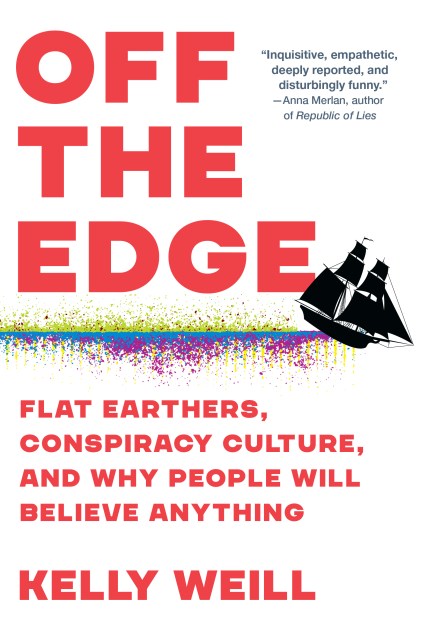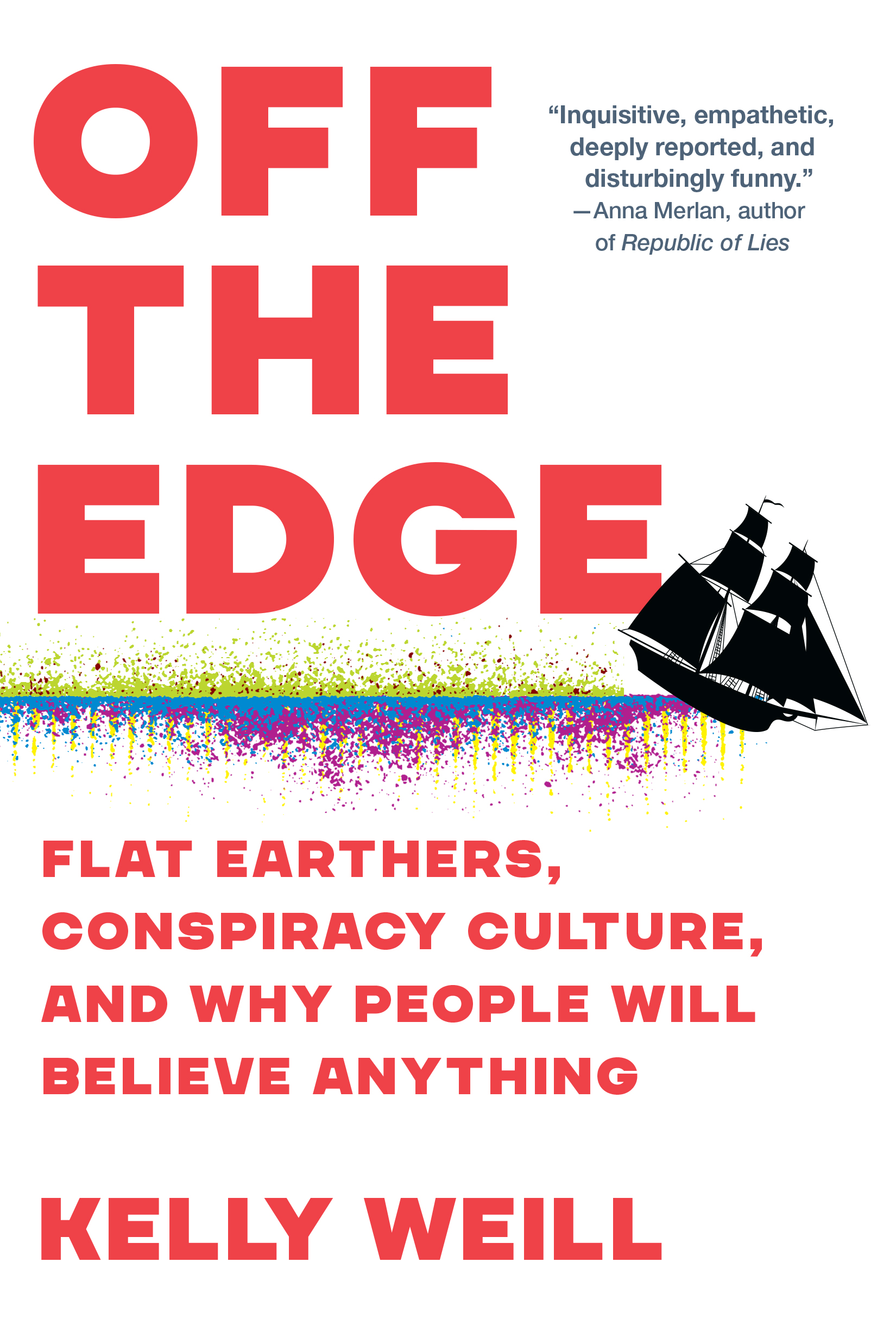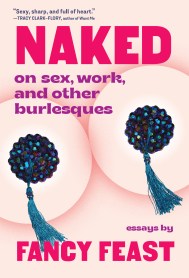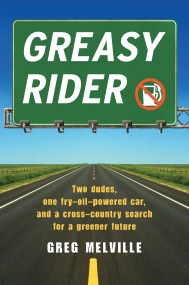Promotion
Use code MOM24 for 20% off site wide + free shipping over $45
Off the Edge
Flat Earthers, Conspiracy Culture, and Why People Will Believe Anything
Contributors
By Kelly Weill
Formats and Prices
Price
$16.99Price
$22.99 CADFormat
Format:
- Trade Paperback $16.99 $22.99 CAD
- ebook $11.99 $15.99 CAD
- Hardcover $27.95 $34.95 CAD
- Audiobook Download (Unabridged) $24.99
This item is a preorder. Your payment method will be charged immediately, and the product is expected to ship on or around February 21, 2023. This date is subject to change due to shipping delays beyond our control.
Also available from:
Since 2015, there has been a spectacular boom in a centuries-old delusion: that the earth is flat. More and more people believe that we all live on a pancake-shaped planet, capped by a solid dome and ringed by an impossible wall of ice. In Off the Edge, journalist Kelly Weill draws a direct line from today’s conspiratorial moment, brimming not just with Flat Earthers but also anti-vaxxers and QAnon followers, back to the early days of Flat Earth theory in the 1830s. We learn the natural impulses behind these beliefs: when faced with a complicated world out of our control, humans have always sought patterns to explain the inexplicable. But something else has shifted. Powered by Facebook and YouTube algorithms, the Flat Earth movement is growing.
At once a definitive history of the movement and an essential look at its unbelievable present, Off the Edge introduces us to a cast of larger-than-life characters. We meet historical figures like the historical figures who first popularized the theory and the many modern-day Flat Earthers Weill herself gets to know. We discover what, and who, converts people to Flat Earth belief, and what happens inside the rabbit hole. In this incisive and powerful book, Kelly Weill explores how we arrived at this polarized moment and explains what needs to happen so that we might all return to the same spinning globe.
Genre:
-
“A deep dive into the world of flat Earth conspiracy theorists . . . that brilliantly reveals how people fall into illogical beliefs, reject reason, destroy relationships, and connect with a broad range of conspiracy theories in the social media age. Beautiful, probing, and often empathetic . . . An insightful, human look at what fuels conspiracy theories.”
—Science
"This provocative book is sure to inspire debate about conspiracy theories as well as how citizens of a fractured world can learn to overcome their fear of radical planetary change. A timely and disturbing study of flawed, dangerous thinking."
—Kirkus Reviews
"Insightful and surprisingly empathetic . . . an illuminating take on a much scrutinized subject."
—Publishers Weekly
“An illuminating study that locates the common human psychological impulses behind conspiracy culture.”
—Library Journal
“In lively prose, Weill untangles the most complicated webs, revealing the real people who believe the unbelievable.”
—Booklist
“Even-handed… perfectly encapsulates disturbing implications of conspiracy theorists and their beliefs.”
—Minneapolis Star-Tribune
"The book is well-researched and makes for quick and entertaining, if disturbing, reading.”
—Ars Technica
"An inquisitive, empathetic, deeply reported, and disturbingly funny tour through the furthest reaches of the most fringe possible conspiracy community. While Weill's subjects frequently risk falling off the edge of their own self-created map of the known universe, she follows them deftly to the brink, showing what their delusional explorations can teach us about belief, community, and the long history of pseudoscience around (sorry!) the world."
—Anna Merlan, author of Republic of Lies
"In this delightful deep dive into flat earth culture past and present, taking in YouTube recommendation algorithms, amateur rocketry, and a rat’s nest of conspiracy theories, Kelly Weill explains why, after several millennia of setbacks, the idea that the earth is flat is burgeoning once again."
—Michael Strevens, author of The Knowledge Machine
"Weill's elegant writing, informed by both historical research and deep-delving reporting, offers a complex and vivid portrait of a conspiracy community that serves as a metonym for this moment—when so many of us are in dispute about the very nature of reality. An essential and enjoyable read."
—Talia Lavin, author of Culture Warlords
“Kelly Weill is one of the best observers of the fringes of modern American life, making her the perfect chronicler of the Flat Earth movement. Her deep reporting and gift for storytelling make Off The Edge a gripping read— but what sets Weill apart is her ability to cover her subjects with great empathy, all without losing sight of the enormous damage and personal consequences of their actions.”
—Charlie Warzel, co-author of Out of Office
- On Sale
- Feb 21, 2023
- Page Count
- 256 pages
- Publisher
- Algonquin Books
- ISBN-13
- 9781643753379
Newsletter Signup
By clicking ‘Sign Up,’ I acknowledge that I have read and agree to Hachette Book Group’s Privacy Policy and Terms of Use







